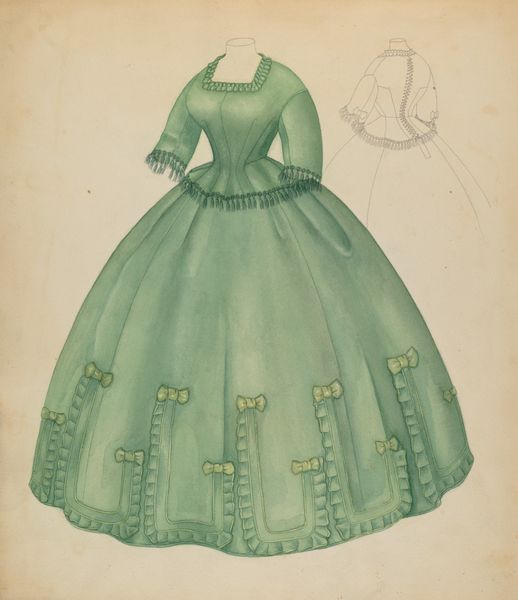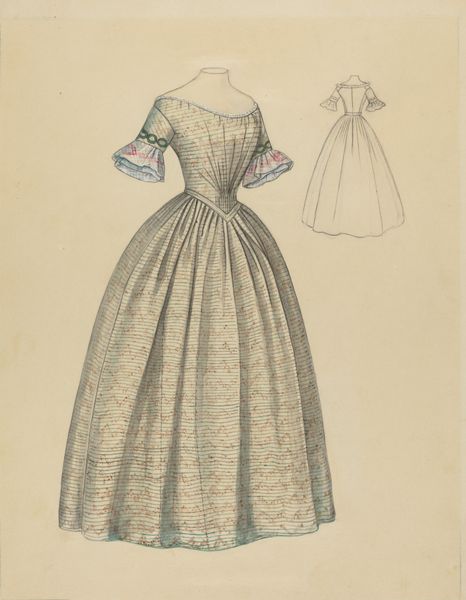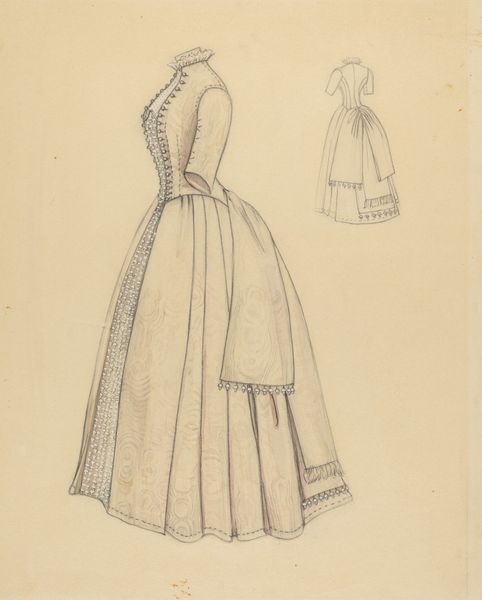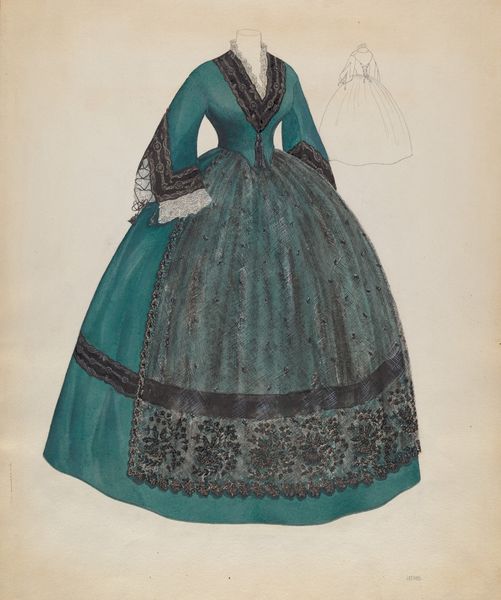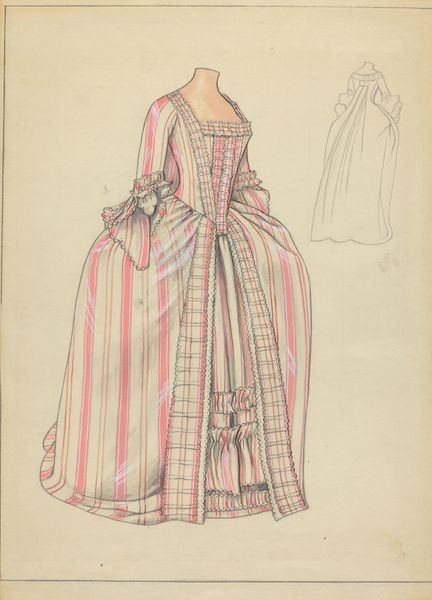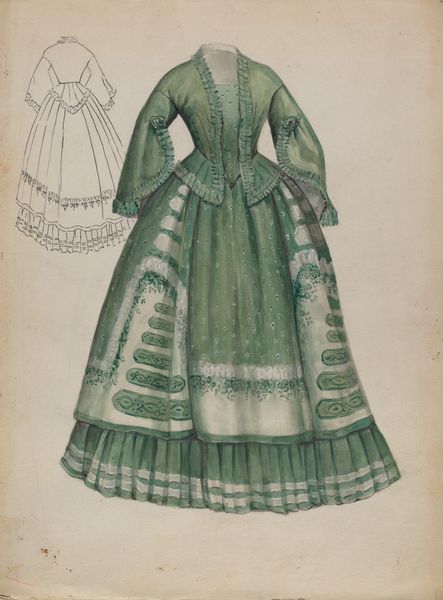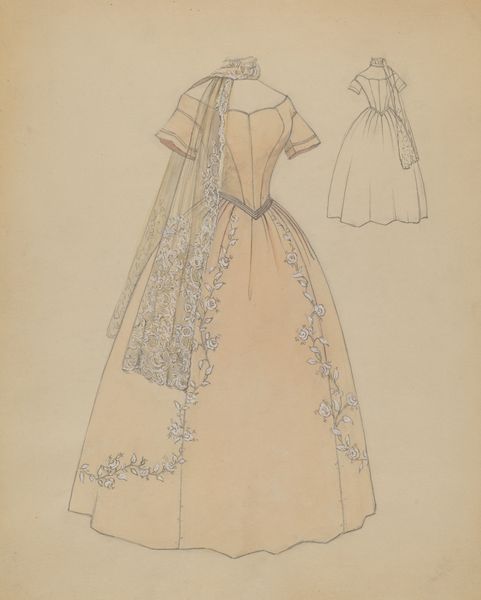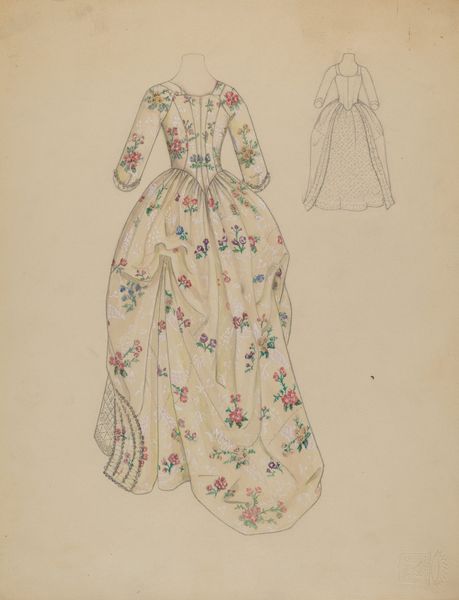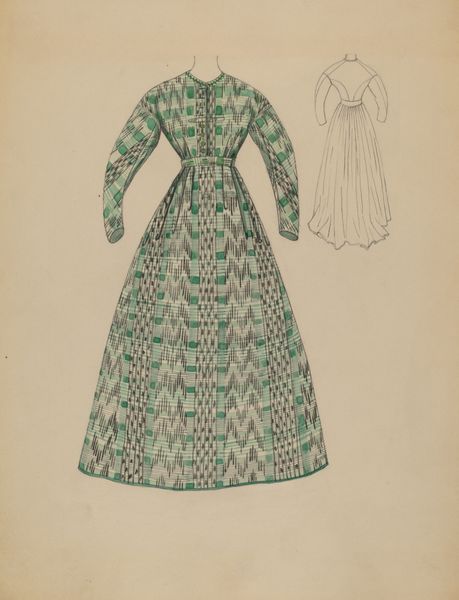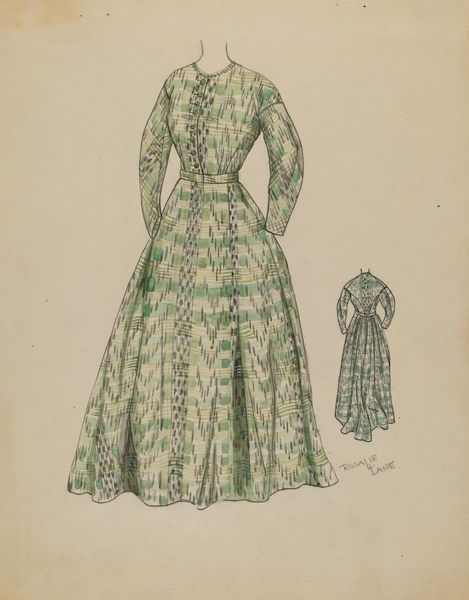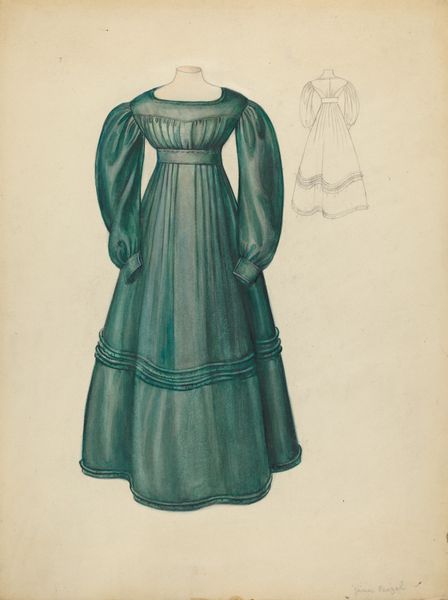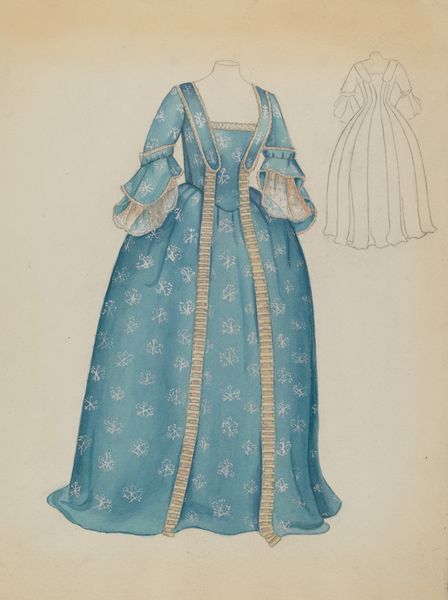
Dimensions: overall: 29.9 x 23 cm (11 3/4 x 9 1/16 in.)
Copyright: National Gallery of Art: CC0 1.0
Curator: What an exquisite rendering! This is Jean Peszel's "Dress," a drawing from around 1939, rendered on paper. It presents a stunning vision of a bygone era. Editor: My immediate impression is one of restricted femininity. The pastel green, while ostensibly soft, feels almost sickly sweet when paired with the rigid structure and excessive ornamentation of bows and ruffles. It feels like a cage, doesn't it? Curator: I see your point, but let’s consider the line and form. Observe the way the artist uses the pencil to delineate the bell-shaped skirt, creating a sense of volume and flow, almost defying the flat surface of the paper. The attention to detail in the rendering of the trimmings is also noteworthy. Editor: Yes, but to what end? Those bows aren't just decorative; they’re strategic placements to feminize and objectify the wearer. A prison of beauty, constructed under patriarchal dictates. The historical context here is crucial; this piece emerges from a time of strictly enforced gender roles. How does this garment dictate posture, movement, and interaction with the world? Curator: We mustn't reduce it to mere social critique. Consider the interplay between the flat drawing and the illusion of three-dimensionality. The color palette is limited, allowing the form to truly stand out, to make use of chiaroscuro… Editor: But surely that play of light and shadow reinforces the prescribed image of women – beautiful but mute? We can't ignore the dress as a signifier of wealth and status. Who could afford such extravagance in 1939, on the brink of war? What message does this send about access and power? Curator: Perhaps. Yet the skillful execution – the texture, the proportion, the undeniable artistic merit – these remain irrespective of socio-political readings. I admire the pure technical achievement here. Editor: And I challenge that notion of 'pure' aesthetics! Art is never created in a vacuum. Recognizing that interwoven influence, and how these aesthetic choices both shaped, and were shaped by a climate that systemically limited freedom, feels essential. Curator: An interesting perspective, one that undoubtedly adds another layer of complexity to our understanding of Peszel's work. Editor: And it’s these challenging, but necessary, dialogues that makes looking at works such as this particularly rewarding.
Comments
No comments
Be the first to comment and join the conversation on the ultimate creative platform.
